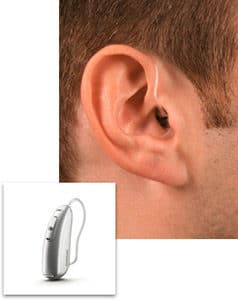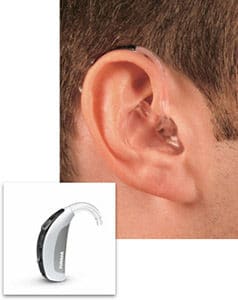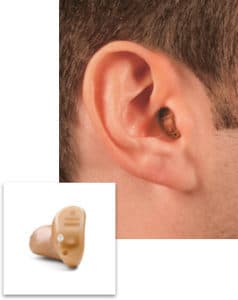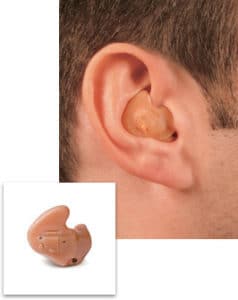The Benefits of Having a Portland Hearing Specialist
Early detection increases the odds of successful treatment for all types of hearing loss. In many cases, the only way to determine if your hearing is healthy is to visit a hearing loss specialist or audiologist for testing. Regular hearing exams can help your hearing loss specialist identify a problem with your hearing in its early stages. This allows hearing specialists to offer treatment solutions to those who might otherwise experience the debilitating social and emotional effects caused hearing loss. Confusion, depression, anxiety and social withdrawal are all common in Portlanders with untreated hearing loss.
Whether you’re young or old, sick or healthy, on your own or raising a family, it’s important to find a hearing specialist near your Portland home who you can trust. By establishing a relationship with a hearing loss specialist, you can rest assured that your hearing healthcare will stay up-to-date and always on schedule. Plus, it’s great to have a place to turn anytime you have questions or concerns about your hearing health!
Here are some quick links to topics discussed on this page:
- What is an Audiologist
- Choosing a Hearing Aid
- Hearing Aid Fitting and Counseling
- Hearing Aid Types
- Hearing Aid Accessories
- Communication Strategies
What is an Audiologist?
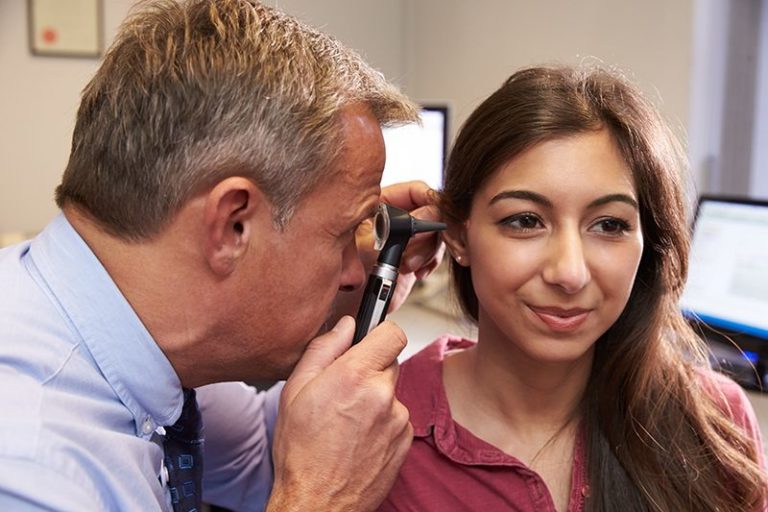
An audiologist is a professional who specializes in the diagnosis, evaluation and treatment of hearing and balance disorders. Most have earned an Au.D. (Doctor of Audiology) while others have received a master’s degree from an accredited university, where they received extensive training in the prevention, identification, assessment and non-medical treatment of hearing and balance disorders. They have to complete an internship, pass a national competency examination and obtain professional certification and licensure in the state(s) where they practice.
Audiologists work with patients of all ages, treating infants, children and adults for a variety of hearing and balance problems. They work in diverse settings like hospitals, schools, clinics, universities, private practices, VA hospitals, hearing aid dispensaries and otolaryngology (ENT) offices. Audiologists are responsible for services such as:
- Fitting and dispensing hearing aids.
- Administering hearing and balance tests.
- Assessing candidacy for bone anchored hearing aids and programming implantable hearing devices.
- Counseling patients and their families on communication strategies.
- Designing and implementing hearing conservation programs and newborn hearing screenings.
- Providing aural rehabilitation.
All in all, audiologists are the most qualified individuals to help you manage your hearing loss or balance disorder, and they provide an unparalleled breadth of care.
Call PDX ENT at (503) 222-3638 for more information or to schedule an appointment.
Choosing a Hearing Aid

Narrowing the choices down can be tough, but there are a few important things you should take into consideration before choosing a hearing aid.
What Are Your Hearing Needs?
First, you’ll need to have an audiologist assess your hearing loss. Severity is measured in degrees, based upon your hearing loss range in decibels. It ranges from normal (-10 to 15 dB) to profound (91+ dB), with a total of seven different degrees.
Equally important is the frequency of your hearing loss. Conductive hearing loss resulting from damage to the outer or middle ear affects low frequency sounds, while sensorineural hearing loss, in which damage occurs to the inner ear, results in a loss of high frequency sounds.
You’ll need to choose a hearing aid that targets the frequencies you have trouble comprehending.
What Are Your Lifestyle Needs?
Functionality is an important consideration. With so many available features, you’ll need to decide which ones matter most to you. Popular features include:
- Directional microphones.
- Feedback suppression.
- Digital noise reduction.
- Wax guards.
- Automatic volume control.
- Bluetooth® connectivity.
Extra features cost money, so speak with your audiologist to get an idea about the pros and cons of these features.
You’ll also have to take into account your lifestyle needs. Whether you enjoy quiet, intimate gatherings with a few close friends or an active outdoors lifestyle that includes a lot of background noise, there is a hearing aid designed specifically for your activity level.
What Is Your Cosmetic Preference?
Cosmetic preference is a key factor in choosing a hearing aid. Since you’ll be wearing it every day, it’s got to not only feel good but appeal to your confidence.
Hearing aids are available in a variety of sizes and styles, some visible while others are implanted deep within the ear canal, rendering them virtually undetectable. Many are custom-molded to fit each individual’s ears.
What Is Your Budget?
Finally, there is cost. Hearing aids can range in price from a few hundred dollars up to several thousand dollars apiece. Price will be a factor, but be sure to consider your specific hearing needs when making this decision.
Investing in a cheap hearing aid that is ineffective is a waste of money; conversely, you don’t want to overspend on features that won’t benefit you. Your audiologist can offer suggestions that will point you in the right direction.
Call PDX ENT at (503) 222-3638 for more information or to schedule an appointment.
Here are some quick links to topics discussed on this page:
- What is an Audiologist
- Choosing a Hearing Aid
- Hearing Aid Fitting and Counseling
- Hearing Aid Types
- Hearing Aid Accessories
- Communication Strategies
Hearing Aid Fitting and Counseling
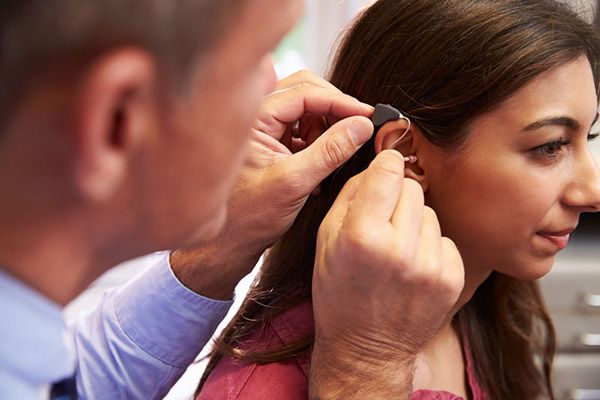
Before you ever put on hearing aids, you’ll receive counseling to prepare you for this change in your lifestyle. While hearing aids will undoubtedly improve your communication abilities, it is important to understand they are not a cure for hearing loss, and do have certain limitations. Learning what to expect beforehand will help you achieve the maximum benefit from your devices.
When you receive your hearing aids, you will need to schedule a fitting appointment to make sure they are programmed to the optimum settings for your specific hearing needs.
Your audiologist at PDX ENT will check the physical fit to make sure they are comfortable. They will then be programmed and adjusted based on your hearing loss and lifestyle needs. The hearing aids will be placed in your ears and turned on, allowing your audiologist to measure the volume levels to ensure that you are hearing the full range of sounds properly.
Your audiologist will then discuss care and maintenance of your hearing aids. You will learn how to use them correctly and make adjustments for different hearing environments, insert and remove them, change the batteries and clean and care for them properly. You will also learn tips and strategies for better communication.
A follow-up visit will be scheduled a few weeks after your initial fitting. During this appointment, your audiologist will fine-tune and adjust your hearing aids as needed and answer any questions you may have. It may take a while to adjust your hearing aids to their maximum effectiveness, so additional fitting appointments may be needed.
Call PDX ENT at (503) 222-3638 for more information or to schedule an appointment.
Hearing Aid Types
With the advent of digital technology more than 20 years ago, hearing aids have remarkably improved. If you’re picturing big and bulky devices with questionable sound quality, you’ll be pleased to learn today’s instruments are smaller, more comfortable and provide sound that is more natural. They are available in a variety of sizes and styles, so finding one that appeals to your lifestyle needs and cosmetic preferences should be easy. Here are the styles available:
Receiver-in-the-Canal (RIC)
A RIC hearing aid consists of a tiny housing containing all electronics except the receiver, which is positioned behind the ear. A thin tube connects the housing to the receiver, which is worn in the concha (bowl-shaped portion) of the ear. It’s a small and discreet unit but powerful enough for treating mild to moderately severe hearing loss.
Behind-the-Ear (BTE)
The most popular style of hearing aid (about 60 percent of users choose this type), a BTE device is curved to match the contour of the ear and rests directly behind the ear. The housing, which contains all the electronics, is encased in plastic and connects to the ear canal with a thin, clear tube or ear mold. Though more visible than other styles, the BTE is simple to use, making it a popular choice for children. It’s powerful enough for all types of hearing loss.
Completely-in-the-Canal (CIC)
This hearing aid is placed in the ear canal and is the smallest available. It takes advantage of the ear’s natural ability to collect sound, and its discreet size makes the device virtually invisible to others. The trade-off is a shorter battery life, and it may prove difficult to adjust for those with poor manual dexterity. This is a good choice for mild to moderate hearing loss.
In-the-Ear (ITE)
This hearing aid is designed to fill the outer portion of the ear, and is larger than those worn in the ear canals. It is less discreet, but the size allows for more features and makes the unit easier to adjust. A bigger battery translates to longer life and means those with severe or profound hearing loss can benefit from this style.
Open Fit
The Open Fit hearing aid is a smaller version of the BTE. Like that device, it rests behind the ear and includes a transparent tube that delivers sound to the ear canal through a very small earpiece. Because the ear canal is left unobstructed, there is less occlusion with this style, and the smaller size appeals to many adults. Prone to low frequency noise leakage, this style is best for mild to moderate hearing loss in high frequency ranges only.
Hearing Aid Accessories

Some of the more popular hearing aid accessories include:
- Wireless accessories. Utilizing Bluetooth® technology, wireless accessories enable you to hear better in situations where there is a lot of background noise or distance between you and the speaker. These include wireless microphones, remotes and television headsets.
- Transmitters and receivers. These are helpful in educational situations (a teacher’s words are transmitted directly into the student’s ears) and for children. Transmitters and receivers work together to overcome background noise, distance and reverberation, and contribute to a better learning experience.
- Power adaptors and cords. These add versatility by allowing direct input from various audio sources (FM systems, MP3 players, TVs and computers). Available with both monaural and binaural cords.
- Assistive listening devices/personal amplifiers. A microphone placed close to the speaker amplifies the sound that reaches your ears, giving your hearing aids a boost. Excellent for lectures, church service, theaters and television.
- Earwax filters. Filters prevent earwax, a leading cause of damage to electronic components, from entering the hearing aid. This helps prolong the life of the instrument and provides you with clear, natural sound.
- Cleaning kits. Keeping your hearing aids clean can result in a longer life for your instruments. Cleaning kits give you a leg up on keeping your device in prime working condition. They typically include a wax removal brush and pick, a tube and vent cleaner, battery door opener and battery replacement magnet.
- Batteries. It’s wise to have extra batteries on hand in case your current ones die in the middle of an important listening situation. Especially helpful when you’re traveling.
Communication Strategies with loved ones with hearing loss

- Maintain eye contact with the hearing impaired individual, facing them directly. Do not attempt to hold a conversation from another room; visual cues are an important component of successful communication.
- Make sure you have the person’s attention before beginning a conversation. It helps to state their name so they are aware you are addressing them, and can focus on your words.
- Speak slowly and concisely. Resist the temptation to shout, which can lead to distorted speech and make your words more difficult to understand. Pause between sentences to ensure what you are saying is understood.
- Do not cover your face with your hands or other objects. Individuals with hearing loss rely on visual cues to help follow the conversation, and sometimes find lip reading helpful. Avoid eating and drinking while conversing, as well.
- Try to find a quiet area free of background noise. This can be distracting and cause the hearing impaired individual to miss out on much of what you are saying.
- Repeat yourself if necessary. Try using a different word or rephrasing your sentence if it is too confusing. Refrain from complex words and phrases.
- Supplement your conversation by writing down important information. This might include jotting down the topic you will be discussing beforehand.
- Pay attention to the listener. If they look confused, offer to clarify what you have just said.
- Remember, communication is a two-way street. Give the other person a chance to speak, and do not interrupt.
Here are some quick links to topics discussed on this page:
- What is an Audiologist
- Choosing a Hearing Aid
- Hearing Aid Fitting and Counseling
- Hearing Aid Types
- Hearing Aid Accessories
- Communication Strategies

